Bushido
it’s ok to look for help.
The Basics.
Chances are if you’re here, you already have a pretty good idea of the Seasonal Affective side effects.
For those that are new; a quick rundown of what you may be experiencing year after year in a vicious cycle. No need to be discouraged by that statement, stay tuned there is ways to help yourself become a Seasonal Samurai!
Depressed mood: Persistent feelings of sadness, hopelessness, and emptiness.
Loss of interest: Reduced interest in activities you once enjoyed.
Fatigue: Feeling lethargic and lacking energy, even after adequate rest.
Changes in sleep patterns: Insomnia or oversleeping (hypersomnia).
Changes in appetite or weight: Increased cravings for carbohydrates and weight gain are common, although some may experience a loss of appetite and weight loss.
Difficulty concentrating: Struggling to focus or make decisions.
Irritability: Feeling more irritable, agitated, or anxious than usual.
Withdrawal: Withdrawing from social interactions and isolating oneself.
Physical symptoms: Some people may experience physical symptoms like headaches, body aches, or stomach problems.
Feelings of guilt or worthlessness: Negative thoughts and feelings about oneself.
Thoughts of death or suicide: In severe cases, individuals with SAD may have suicidal thoughts.
Want some real talk, real examples of seasonal struggles - visit My Story - it’s funny, not funny.
Why is this happening?!
Great question! Science is still in the process of researching, below you’ll find some decent theories as to why this happens
Seasonal Affective Disorder (SAD) is a type of depression that occurs at specific times of the year, typically during the fall and winter months when there is less natural sunlight. While the exact cause of SAD is not fully understood, several scientific theories suggest its underlying mechanisms:
Reduced sunlight exposure: One of the leading theories is that reduced exposure to sunlight during the fall and winter months can disrupt the body's internal clock (circadian rhythm) and affect the production of certain neurotransmitters, such as serotonin and melatonin. These chemicals play essential roles in regulating mood, sleep, and overall well-being. Less sunlight may lead to a decrease in serotonin levels and an increase in melatonin levels, both of which can contribute to symptoms of depression.
Biological clock and melatonin: The body's biological clock, which regulates sleep-wake cycles, can be influenced by changes in daylight duration. Reduced daylight can disrupt this clock, leading to disturbances in sleep patterns and mood. Additionally, the pineal gland in the brain increases its production of melatonin in response to darkness, and higher levels of melatonin are associated with feelings of lethargy and depression.
Vitamin D deficiency: Sunlight exposure is essential for the synthesis of vitamin D in the skin. Some research has suggested a link between low vitamin D levels and an increased risk of mood disorders, including SAD. However, the exact relationship between vitamin D deficiency and SAD remains complex and not entirely understood.
Genetics: There may be a genetic predisposition to SAD, as it tends to run in families. Certain genetic factors might influence how an individual's body responds to changes in light and affect their mood and circadian rhythms.
Serotonin transporter gene: Some studies have found an association between certain variations of the serotonin transporter gene (5-HTT) and an increased risk of developing SAD. The 5-HTT gene plays a role in regulating serotonin levels in the brain.
But what can I do about it?
So glad you asked!! Below a basic road map for you to stay ahead of and off set your seasonal cycle. Not a cure all, but there is a definite difference between a proactive SAD season and a passive SAD season.
for your entertainment - pop over here for a tale of the winter I did everything one should NOT do…
Focus on You
Seasonal Self Care List
Seasonal Affective Disorder (SAD) can be a real pain in the ass, BUT practicing self-care can help alleviate some of its symptoms and improve overall well-being.
The below is in order must do’s for me. The order of importance and effectiveness may be different for you,
Create a daily routine: Establishing a consistent daily schedule can help provide structure and stability, reducing feelings of anxiety and restlessness.
Regular exercise: Engage in physical activities that you enjoy. Exercise can release endorphins and help combat feelings of depression.
Spend time outdoors: Whenever possible, get outside and expose yourself to natural sunlight. Even on cloudy days, the natural light can still be beneficial.
Maintain a balanced diet: Focus on eating a nutritious and well-balanced diet, including plenty of fruits, vegetables, whole grains, and lean proteins. Keeping sugars and carbs to a minimum is a big help
Vitamin D supplementation:Consult with a healthcare professional about the appropriate dosage of vitamin D supplements, as deficiencies in this vitamin may contribute to SAD.
Practice mindfulness and relaxation techniques: Explore meditation, deep breathing exercises, or yoga to reduce stress and promote a sense of calm.
Avoid excessive caffeine and alcohol: Limit your intake of caffeine and alcohol, as they can disrupt your sleep and negatively affect your mood.
Light therapy: Invest in a light therapy box that mimics natural sunlight. Use it daily, especially in the morning, to help regulate your circadian rhythm and boost mood.
Socialize and seek support: Spend time with friends, family, or support groups to combat feelings of isolation and loneliness that can come with SAD.
Engage in hobbies: Pursue activities you enjoy, whether it's reading, painting, gardening, or anything else that brings you joy and fulfillment.
Practice good sleep hygiene: Ensure your sleep environment is conducive to restful sleep and aim for a consistent sleep schedule.
Practice self-compassion: Be kind to yourself and acknowledge that it's okay to have ups and downs. Avoid self-criticism and practice self-acceptance.
Warmth and coziness: Create a warm and cozy atmosphere at home with soft blankets, scented candles, or a comforting space to relax.
Limit exposure to triggers: If certain activities or situations worsen your SAD symptoms, try to minimize your exposure to them.
Professional help: If your SAD symptoms become overwhelming or interfere with your daily life, seek support from a mental health professional, such as a therapist or counselor.
Remember that everyone's experience with Seasonal Affective Disorder is unique and your ways to keep it at bay will likely be different than others.
For a curated program Seasonal Samurai lifetime membership available here.

Tap into your inner Warrior and SAD is no longer in control, you are!
Practice is not a cure.
Practice helps mitigate the shitty seasonal feelings that can occur.






